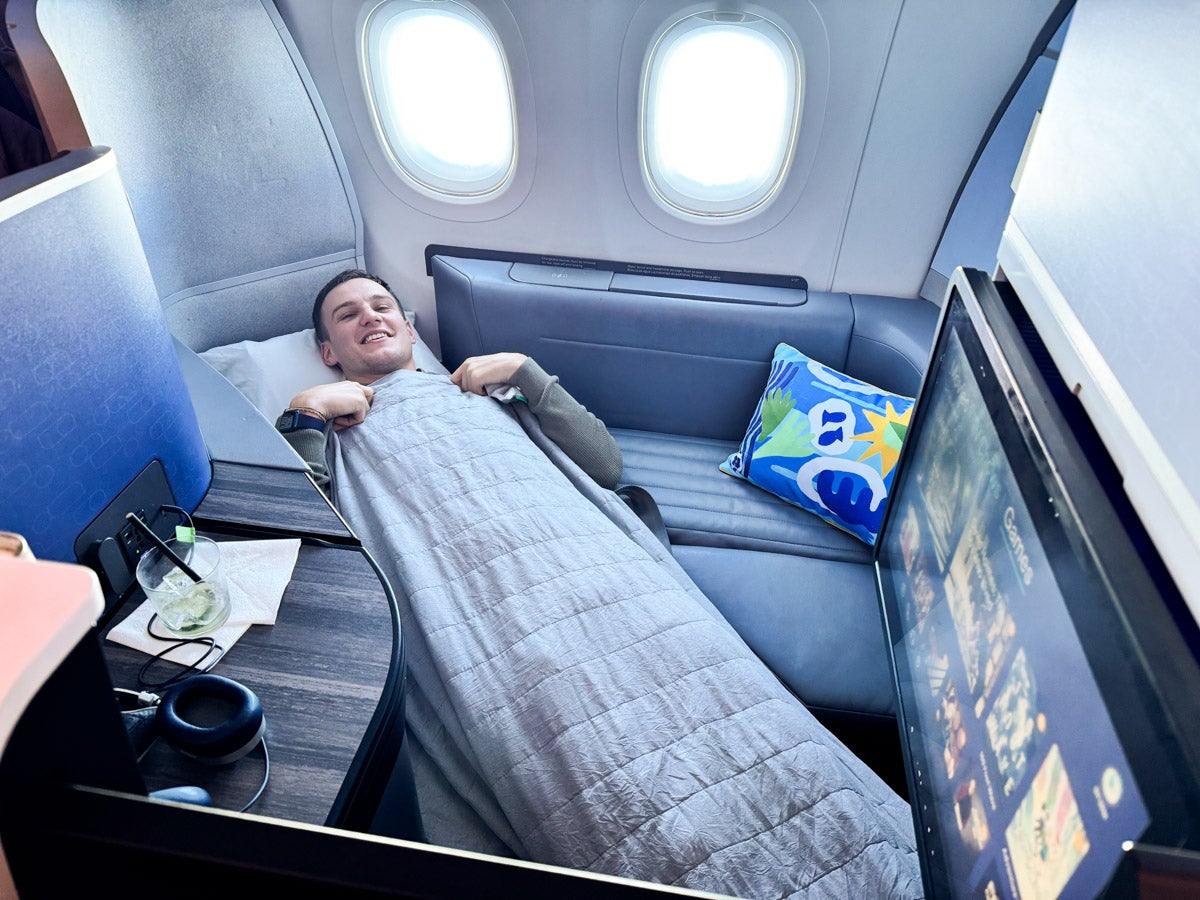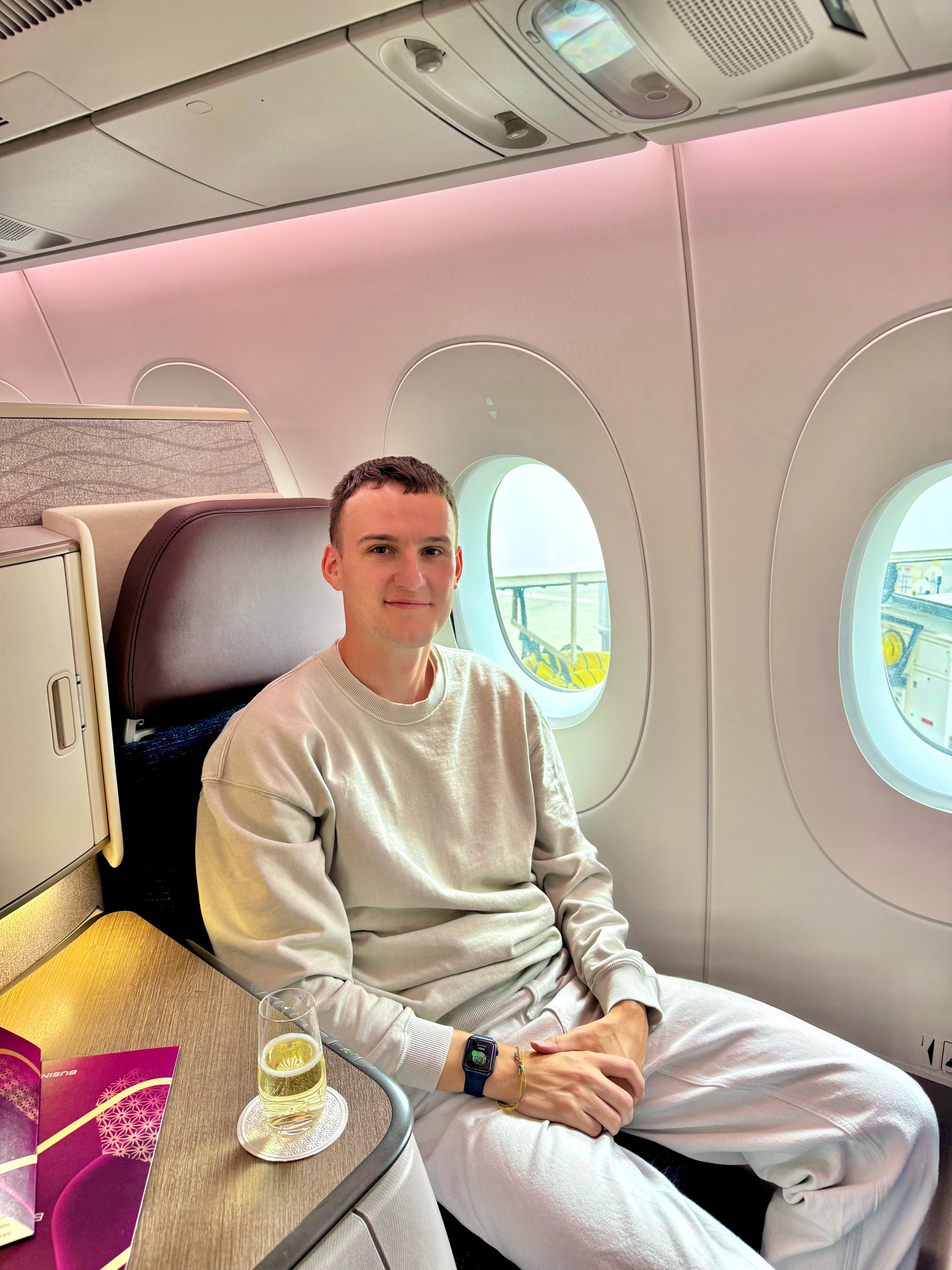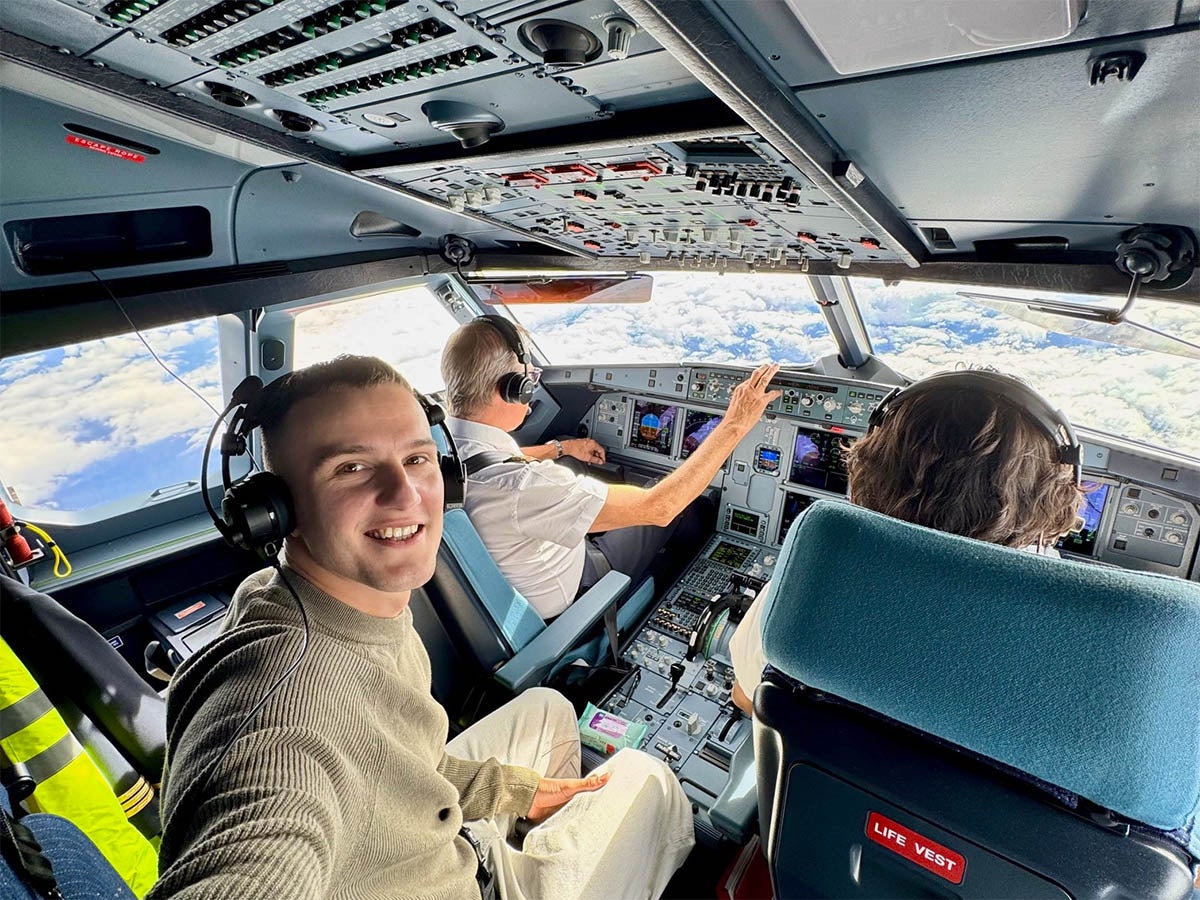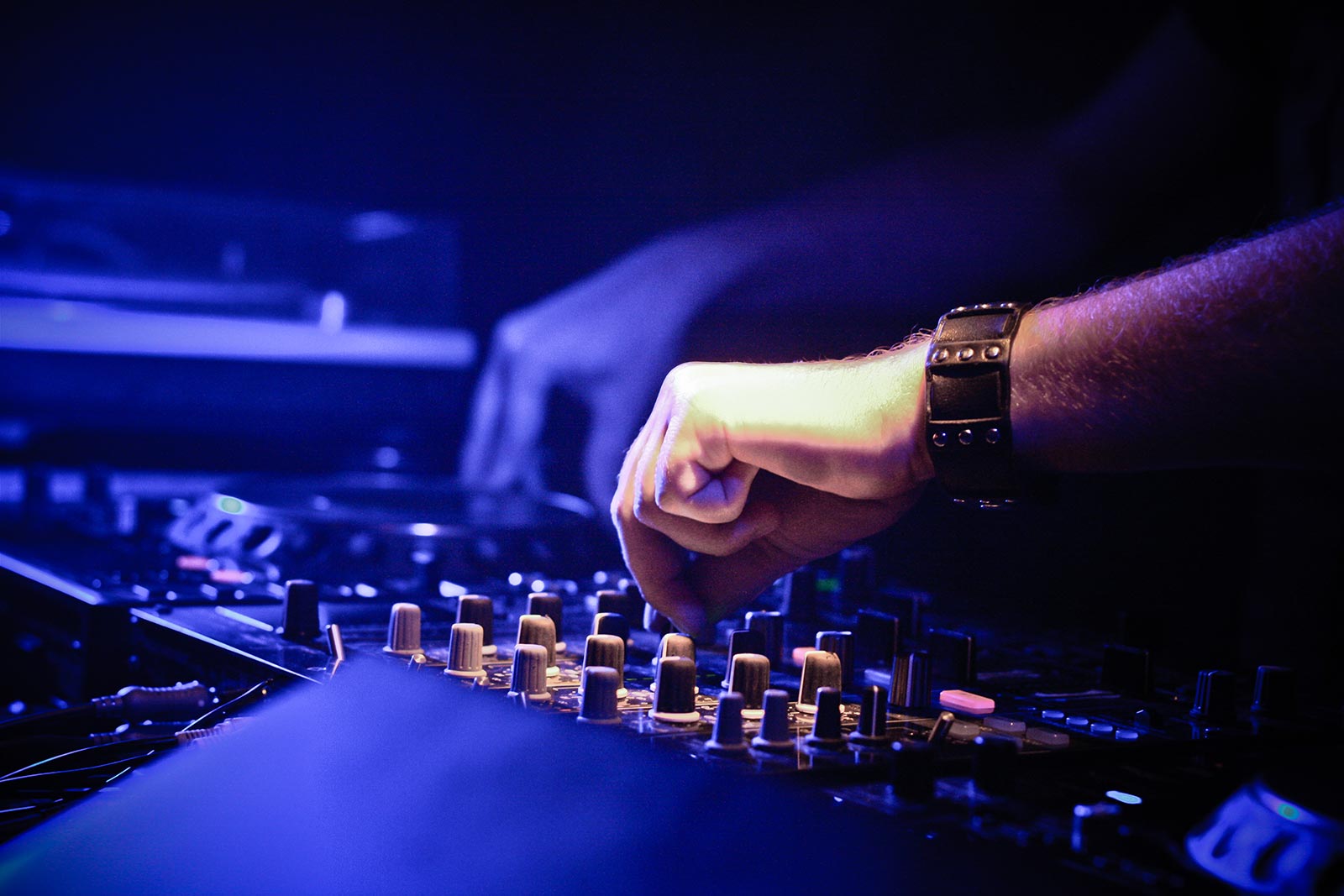This website uses cookies so that we can provide you with the best user experience possible. Cookie information is stored in your browser and performs functions such as recognising you when you return to our website and helping our team to understand which sections of the website you find most interesting and useful.
"How do you beat jet lag?"
Aviation expert Rhys Jones, from frequent flier website headforpoints.com, reveals that this is the number one question he's asked when he reveals what he does for a living. Which is mainly flying in passenger planes and writing about the experiences.
He reveals that after six years in the job, he's taken over 130 long-haul flights, sometimes circumnavigating the globe without leaving airports.
And the answer to the jet lag question? Rhys admits that beating jet lag outright isn’t possible, but there are several ways to soften the impact and he claims to "manage jet lag better than most".
Here’s how he does it.
1. Fly business class

Rhys admits this tip "sounds facetious", but he stresses that not only could he not do his job as an aviation writer and hotel reviewer globetrotting in economy, but that "flying business class is the best way to reduce jet lag".
Why?
"Because with a flat bed you can actually get some decent sleep," he says, adding: "If you're someone who can get a proper eight hours' rest sitting upright cramped in economy, then congratulations. Unfortunately, I need to be at least vaguely horizontal to get some good rest and that's something you only get in business or first class, unfortunately.
"I now actively avoid flying long-haul economy at all costs, even when travelling on my holidays."
2. Use melatonin
Melatonin is a hormone that makes you feel sleepy — and it's produced in greater quantities at night.
Fortunately, this sleep regulator is available over the counter in the US in pill form, with Rhys revealing that it helps him "maintain a regular sleeping schedule".
He warns that taking melatonin too often can lead to dependency, but says: "I find it fantastic in dealing with those classic jet lag situations where you are lying in bed wide awake at 3am because your body is telling you it is morning."
3. Sunlight and exercise

After he lands, Rhys gets outside for a spot of exercise.
He reveals: "Being outside and soaking up some sunshine immediately boosts my alertness and makes me feel better, especially after being in a flying aluminium tube for many hours.
"One of my routines, if I feel up to it, is to go for a run outside within a few hours of getting home in the morning."
4. Do not oversleep
Don't give in to tiredness, says Rhys.
The aviation writer explains: "Be strict with yourself and don't out-sleep an alarm.
"There are few things as detrimental and counterproductive than staying in the 'wrong' timezone and oversleeping."
5. Embrace napping

Rhys is a believer in the power of the power nap and even has the perfect number of minutes for one – 24.
He says: "Personally, I've found 24 minutes to be the ideal amount of time between falling asleep and entering a deep sleep cycle. During such a nap, I'll often feel like I'm not sleeping, only to find my alarm waking me up from a short dream.
"I'll then spend five minutes or so slowly re-energising myself before getting back to whatever it is I need to do, feeling better and more alert."
6. US flights to Europe
Does Rhys have a trick up his sleeve for dealing with flying east from the US to Europe?
Unfortunately not.
He tells The Independent: "Flying east — particularly on the overnight red-eye flights from the East Coast to Europe — can be an absolute killer.
"The relatively short flight time curtails your night and means you only realistically have a few hours to sleep.
"For that reason, I often recommend the east-bound day flights from New York and Boston, operated by British Airways, Virgin Atlantic, JetBlue, United, American Airlines and Air France.
"Instead of trying to cram some sleep, you can enjoy the flight instead and land in Europe in the evening, in time for a cocktail and proper night's sleep.'
This article is based, with permission, on a story originally posted on headforpoints.com.



 Africana55 Radio
Africana55 Radio 
